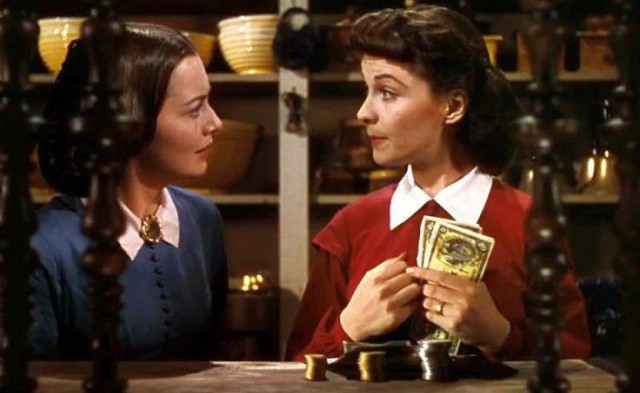The Cost of Making ‘Gone With The Wind’

Everyone’s still talking about the Pomplamoose thing, and Amanda Palmer wrote a piece in The Guardian about the idea that artists sometimes lose money which cites back to The Billfold, and tomorrow I’m going to have another Business of Creative Careers piece where we take a look at how real people handle the cash side of running their own creative business.
But for today, let’s step into the past and take a look at an historical example of an artistic folly that paid off in the end.
Gone With The Wind.
The film version.
What can we say about Gone With The Wind? I think George Cukor just about says it all: “It was an effective, slightly crappola thing, but a damn good story with some very original things in it.”
That’s from Entertainment Weekly’s The Rocky Road to Tara, which, if you’d like me to sum it up the way Katharine Brown summed up the novel to David O. Selznick and, then, Selznick and director Victor Fleming re-summarized and acted out for writer Ben Hecht — seriously, it’s remarkable that the adaptation held so closely to the book, since it sounds like everyone was playing a giant game of Telephone — anyway, if you’d like the summary, it’s “Gone With The Wind cost a bunch of money and everyone thought it was a terrible artistic decision simply because it lost money, and then it paid off in the end.”
How much money, you ask?
By June 1938, without a single actor cast, no workable script in sight and financing as yet unsecured, Selznick had already blown through $400,000 of his own money.
[…]
Louis B. Mayer possessed two things that Selznick desperately required: limitless capital and Gable’s contract. In August 1938, Mayer agreed to loan his top star and $1.25 million in cash to what was quickly becoming his son-in-law’s very public folly. In exchange, MGM would receive worldwide distribution rights and half of the film’s profits over the first seven years. Selznick jumped at the offer. He didn’t have a choice. Gable didn’t appreciate being farmed out like chattel for a movie he didn’t particularly want to star in, but Mayer silenced the actor’s objections by financially helping him with his divorce so he could marry the actress Carole Lombard.
[…]
Already behind schedule, Gone with the Wind was shut down so its new director [Fleming] could get up to speed (the cost: $10,000 a day).
[…]
The film continued to go over budget, and this time, Selznick’s father-in-law was of no mind to bail him out. So the producer turned to financier John Hay “Jock” Whitney, who staked Selznick $1 million of his own fortune to keep the cameras rolling.
[…]
On June 27, 1939, production finally wrapped. It took 125 days of photography, 37 months of preparation, half a million feet of film and a budget of $4.25 million (at a time when the average feature cost less than $1 million).
Now, of course, Gone With The Wind is mentioned on every list of highest-grossing films of all time. The New York Times argues that, adjusted for inflation, it’s still the highest-grossing film of all time, even beating out Avatar, which, come on, are we still going to be talking about Avatar a century from now? We’ll probably still be watching Gone With The Wind, with one of those Warner Bros-esque title cards that reads “This film represents the cultural and racial biases of its time period, which were wrong then and are wrong today.”
So yeah, sometimes creative projects lose money. And then, if they’re good, they earn that money back.
More on creative businesses tomorrow.
Support The Billfold
The Billfold continues to exist thanks to support from our readers. Help us continue to do our work by making a monthly pledge on Patreon or a one-time-only contribution through PayPal.
Comments